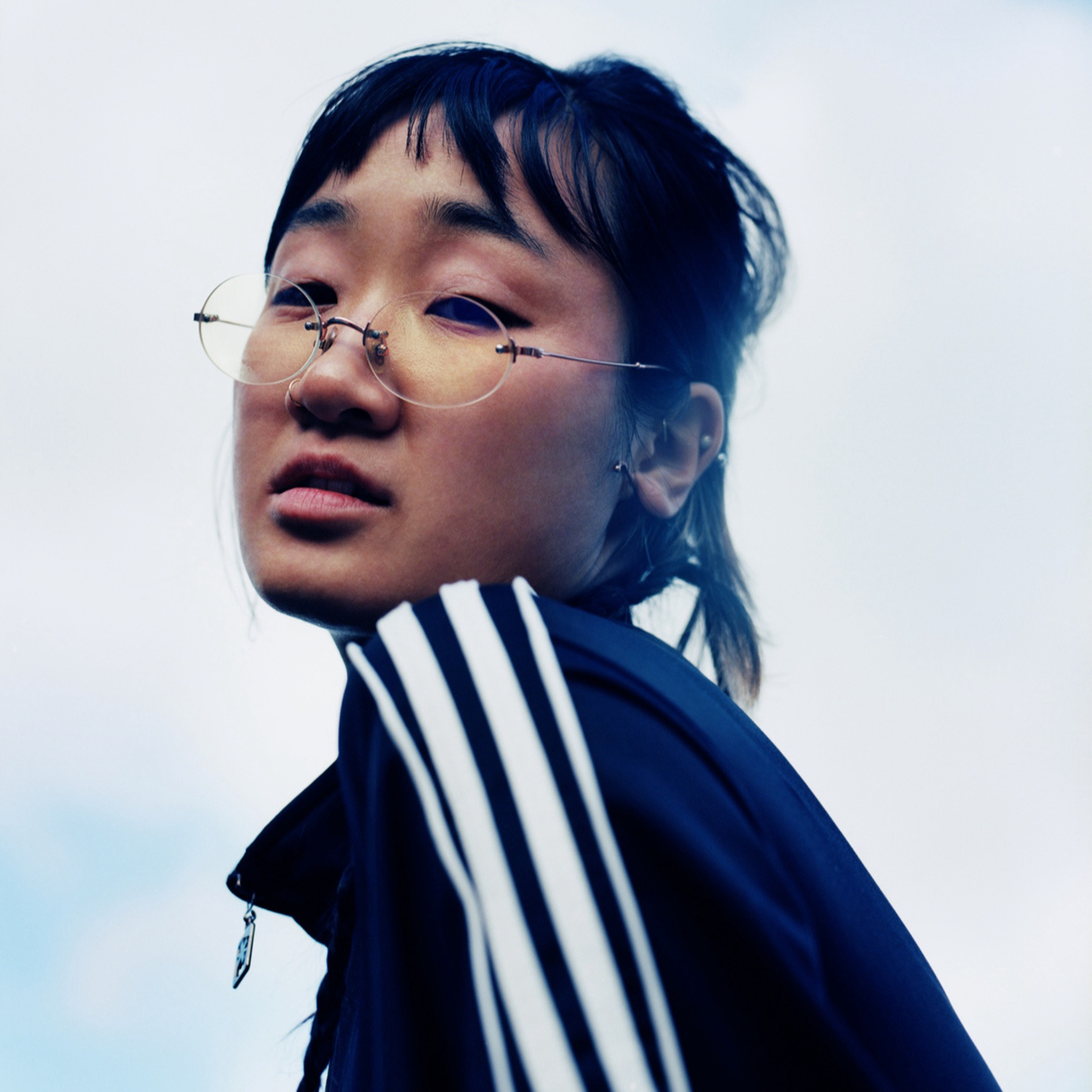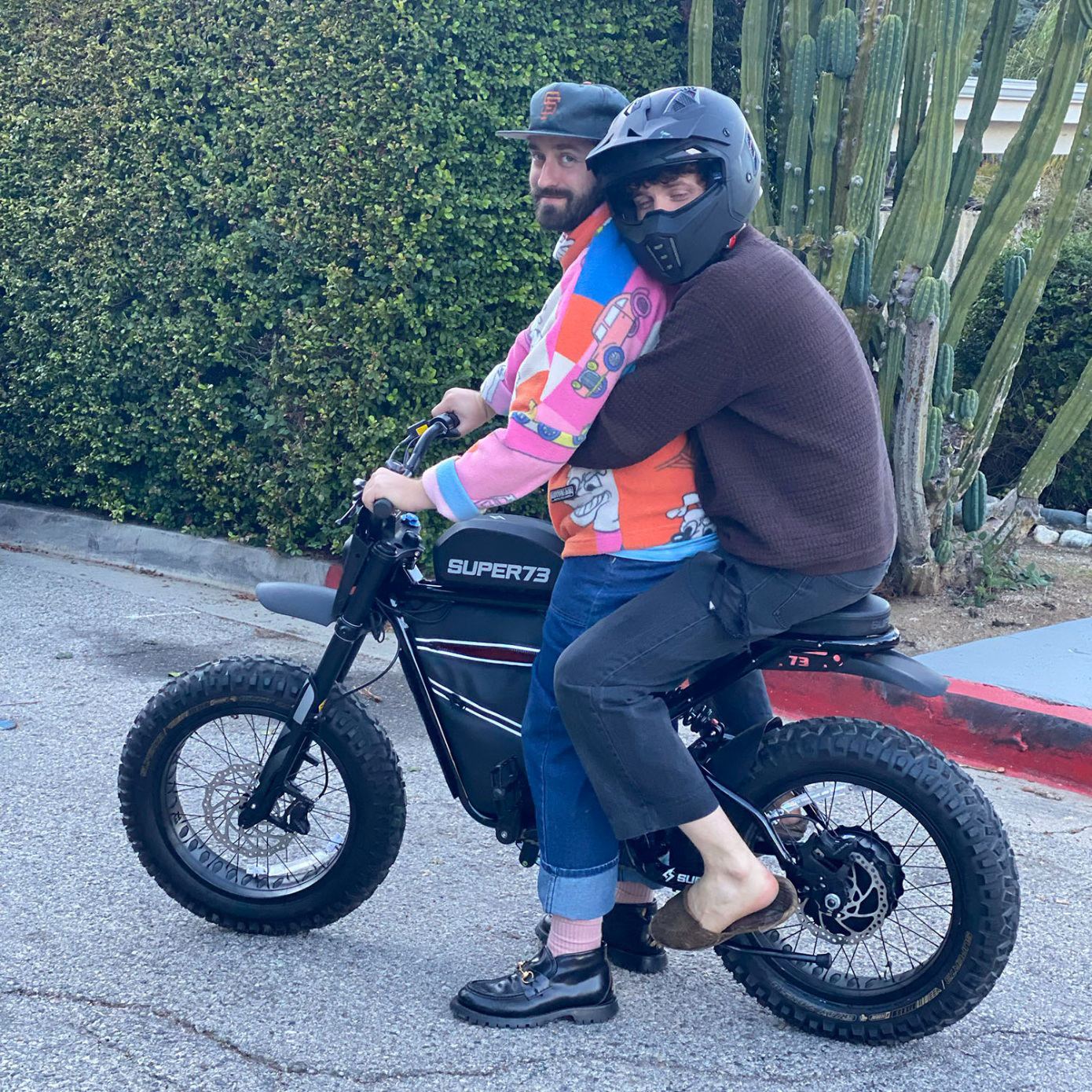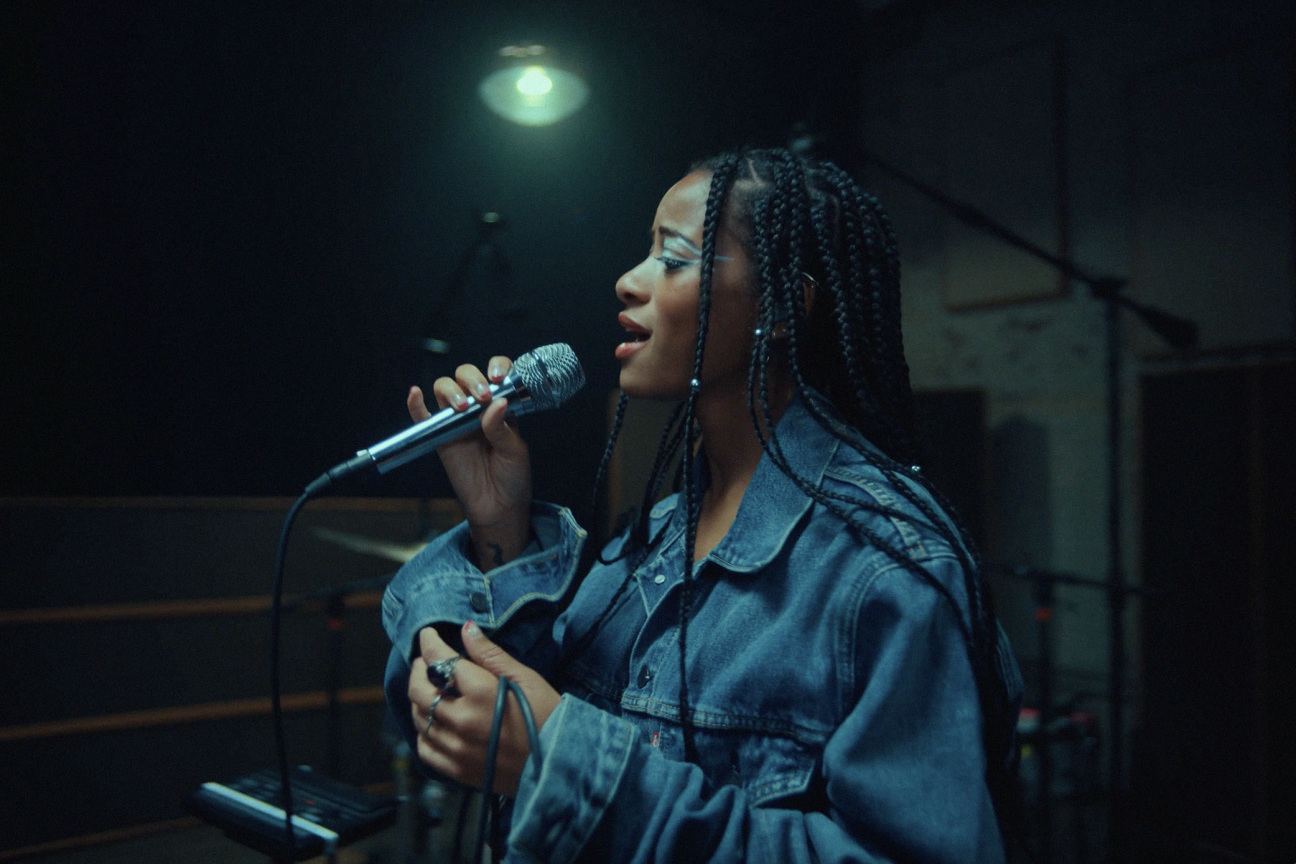
Musician and artist Kilo Kish doesn't think in album cycles—she's too focused on world-building. In 2022, she released her sophomore album American Gurl, and now returns to the project with Ephemerica: Faces in the TV, a short film that takes viewers through the emotionally fraught cultural touchpoints of the far-ranging LP.
The album landed a decade after the musician emerged on the Los Angeles scene with the release of her first EP, Homeschool, in 2012. By the time American Gurl came around, Kish had settled into an alternative stream of concept pop and had placements in Euphoria and worked with the likes of Gorillaz, Vince Staples, and Childish Gambino.
Many of her regular collaborators return here, including Staples, director C.T. Robert, and musical director Ray Brady. Like the album, Ephemerica immerses audiences in an unfiltered look at the effect new media has had on its native generations, here shown as a blend of contemporary and ever-so-slighly outmoded technologies. Following screenings at a number of theaters in New York and Los Angeles, as well as at an exhibition with Hauser & Wirth out West, Kish now premieres the film for a digital audience—its most pertinent demographic—below, and lets CULTURED in on its back story.
CULTURED: There are a number of scenes in the film alluding to shows and ads the audience will certainly be familiar with, like Maybelline or America’s Got Talent. How did you choose which touchpoints to weave in?
Kilo Kish: We really wanted the film to feel like my teenage years, getting ready for school with MTV Wake Up and to highlight the close relationship this form of media has always had with Millennials. The different ads help to highlight the randomness of what we consume on a daily basis and some of the identities imposed.
CULTURED: Can you tell us about putting together the visual identity of this film?
Kish: It follows some of the fun, pop, Americana identity that the American Gurl album had. This album was fun because usually I have a much stricter sense of needing things to all fit together aesthetically, but with this album, I kind of leaned into kitsch and tackiness in a way that was really exciting. It felt good to break from the need to feel “artful” or “decent.”
CULTURED: What are you hoping your audience walks away with from this project?
Kish: We set out to simply make a live performance film, and the director C.T. [Robert] and I just wanted to play and push the boundaries of what that could look like. There’s no specific message to take away, it’s really more so a clash of stimuli that will affect people in different ways. But it was exciting to play with narrative elements, A.I. elements, live performance, and experimental filmmaking in one piece.
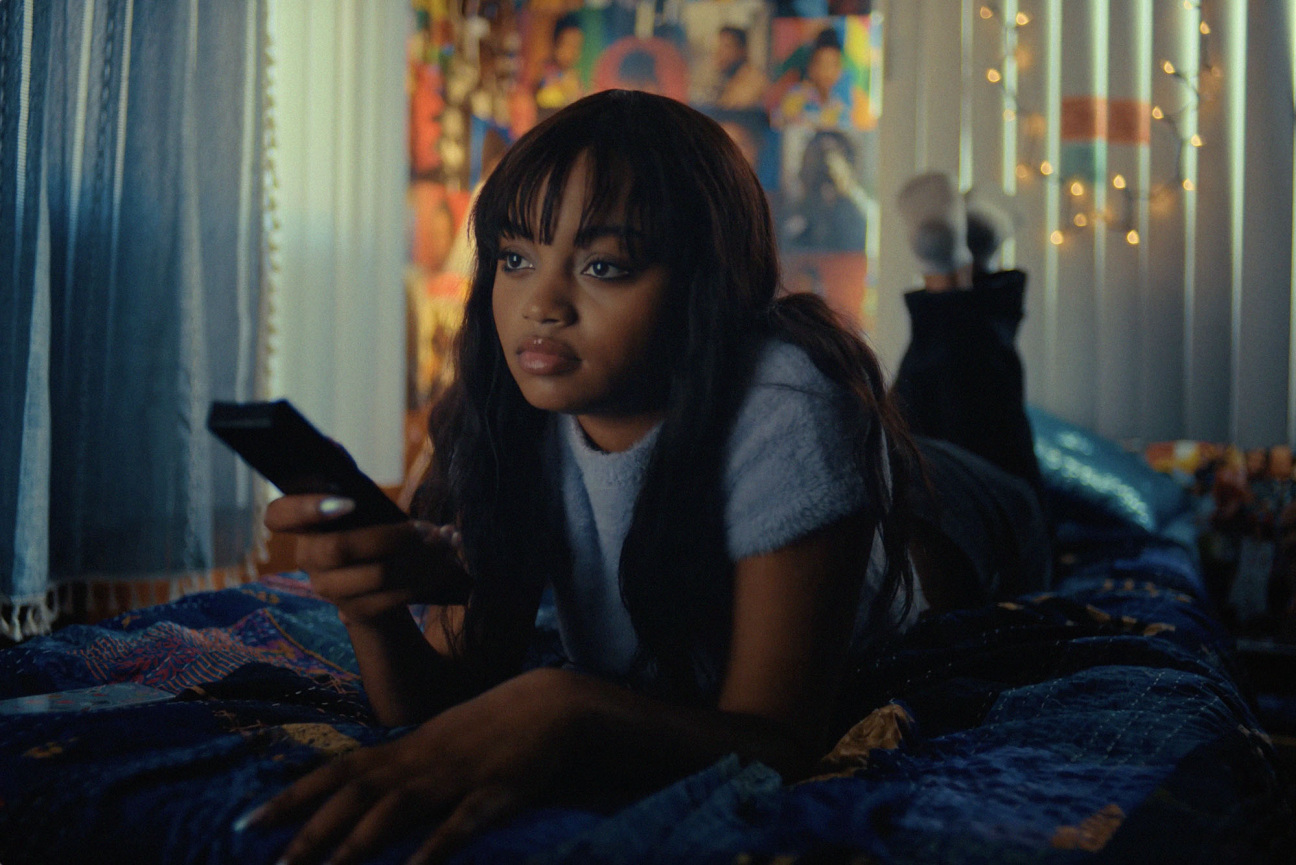
CULTURED: How has your practice evolved since American Gurl was released?
Kish: American Gurl has been one of those projects that grew tendrils in all directions—film, performance, screenings, installations, and the typical music, design, and packaging work. I think the concepts from the album, of just exploring identity and my personal relationship with the idea of Americana, allows for many other interpretations by other artists and it has been nice to open that up to other artists with the show at Hauser & Wirth in LA and the upcoming show at the Gantt Center. It’s been a fun curatorial lens for Zehra and me.
CULTURED: You’re treading a thin line between sarcasm or playfulness and feelings of desperation or dissatisfaction. How did you achieve that balance in this project?
Kish: That is the character of a lot of my work. It’s been nice to have that carry through in a collaboration with C.T. in our first project together. Score is super important, and visually juxtaposing something light and fun with foreboding music helps to straddle that line.
CULTURED: What has the response to this project been thus far from early screenings?
Kish: It’s been nice to see different reactions, where some viewers respond more to the musical aspect and the live performances, while others resonate with the teen girl. I think for some, it has a nostalgic quality.
CULTURED: You and Vince Staples have a long history of collaboration. How would you characterize that relationship, and what was it like pairing up for this project? What other collaborators were you able to bring in on this as well?
Kish: With Vince, we just always have a willingness to show up where we can and that comes from a mutual respect of each other's creative practice and just friendship. In the bonus songs on the website, there is a performance that includes Twin Shadow, and there's also a performance with Miguel. C.T. came with a whole crew of new film collaborators who I hadn’t worked with in the past and Ray Brady music directed, bringing in a band of friends who have never played together before this film. So, it was a big mix of new collaborations.
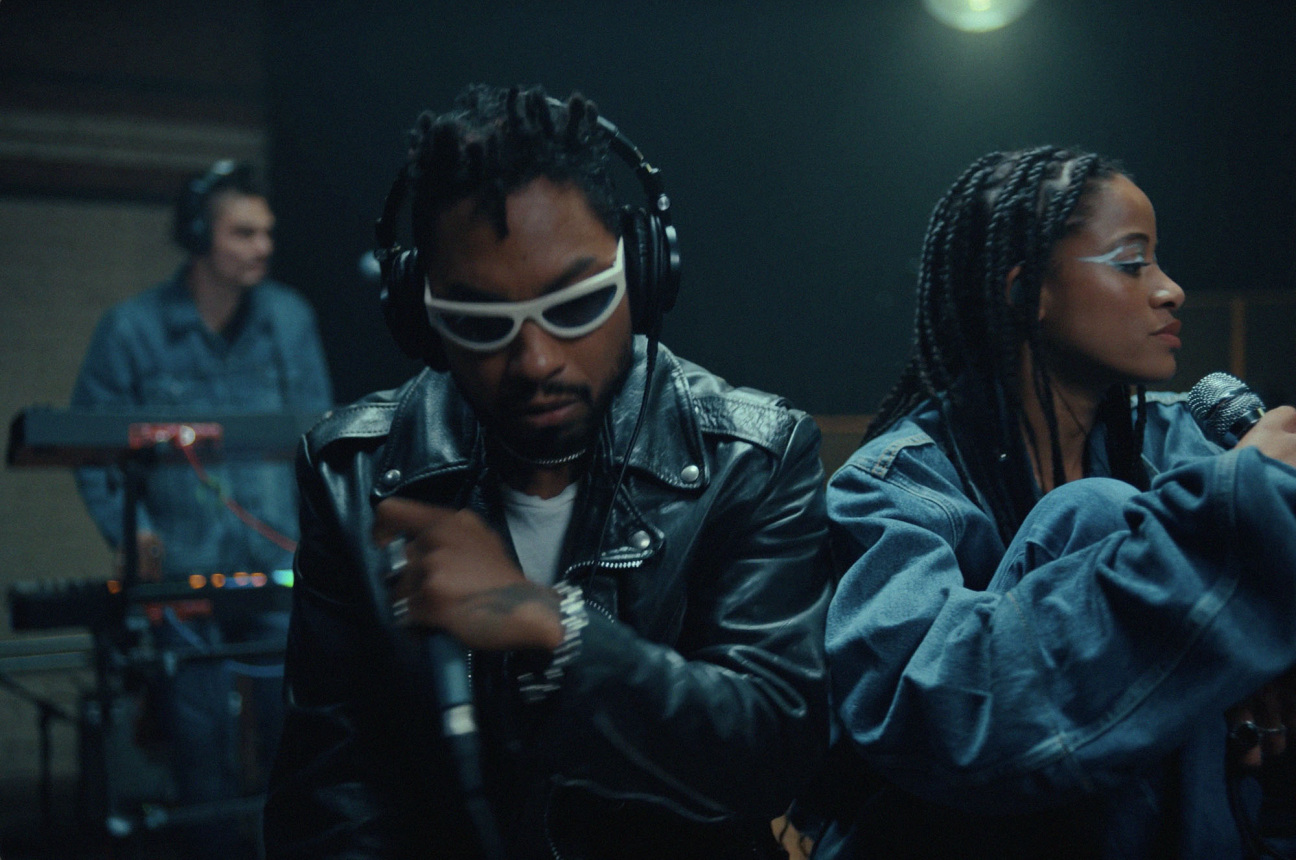
CULTURED: How does Ephemerica fit into the larger framework of “project worlds” you have created? How do you see Ephemerica expanding the conversation started with American Gurl?
Kish: I love to create supplements that aid the album’s original themes but maybe turned to the left or right a little. In the way that comic books kind of have alternate realities or storylines, that's the way I like to continue to build on a project. The world that Ephemerica exists in is not exactly a portrayal of my reality as an individual, but it pulls reference from my own sense of memory and future possibility. The teen girl doesn’t exist in a real time; she’s watching '90s MTV, but she has Instagram, there’s A.I., and I also exist out of time with that reality. It’s a reality that smashes a lot of eras together and asks questions about what it means to live and grow up with this ever-present influence.
CULTURED: In addition to the impact of television, what other aspects of contemporary culture do you find most intriguing, and how do these topics impact your work?
Kish: With American Gurl, TV was a major focus because I was thinking about the past. But I’ve explored social media a lot with my album Reflections In Real Time. That project had a supplemental installation that explored attention and surveillance and used some early forms of A.I. predictive text to create artworks and poems. I find how we present ourselves as humans really fascinating, and it’s something I think about so much and love to explore in my work. I’ve been really interested in humanity, reality, and authenticity and how that concept can be warped and changed depending upon the context.


